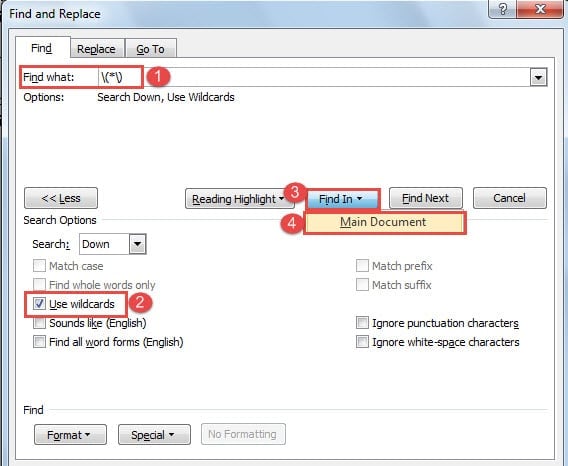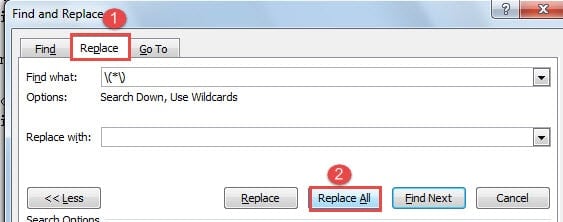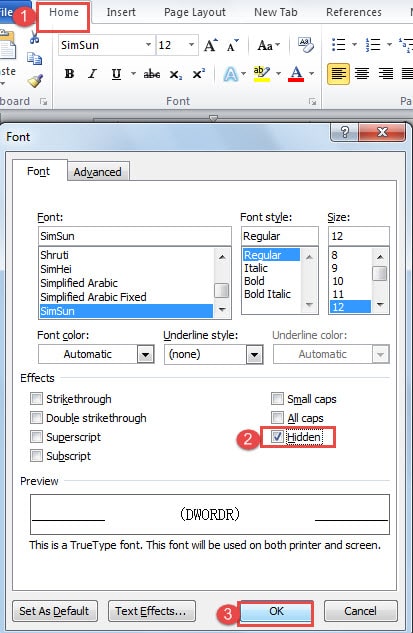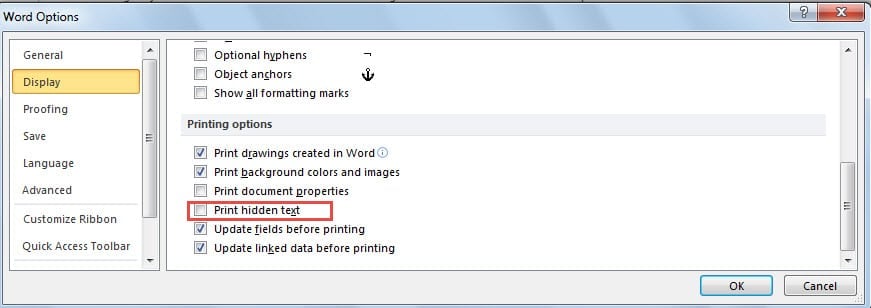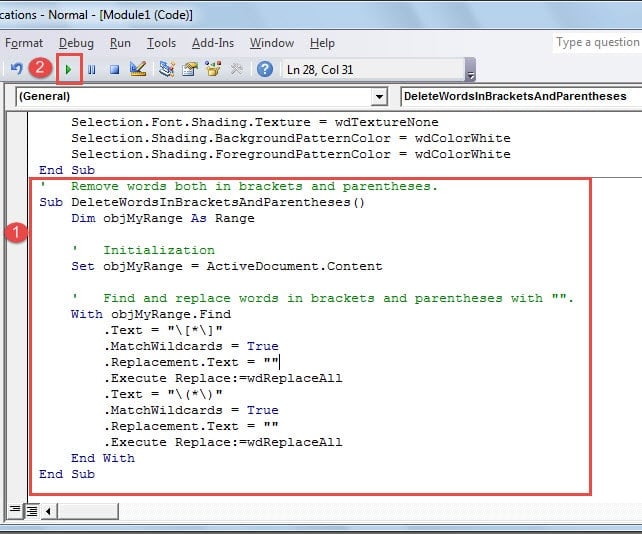In this article, we will provide you with 3 effectual methods to exclude texts in parentheses or brackets from word count.
There are times when we write a Word document, we’d like to put some illustrative texts in parentheses or brackets to help both readers and ourselves understand the article better. However, here is the bothering fact that Word by default counts them all. And sometimes you may just want to see how many “effective” words you have instead of getting a number including the count of words in parentheses or brackets.
Luckily, that’s not impossible and here are 3 ways to which you can resort. To start with, 2 of the 3 ways involve the way to find words in parentheses or brackets via “Find” feature. Therefore, we shall begin with the steps to do that task.
Find Words in Parentheses or Brackets
- Firstly, click “Home” tab.
- Then click on the upside-down triangle button on “Find”.
- And choose “Advanced Find” on the list.

- In “Find and Replace” dialog box, enter “\(*\)” in the “Find what” text box.
- Then click “More” to extend more options.
- Next check the “Use wildcards” box.
- And click “Find In” button and select “Main Document”.
- The next thing you can see is all words in parentheses are selected. And if you want to find words in brackets, just enter “\[*\]” in the “Find what” text box instead.
Method 1: Operate on a Copy
- First off, make a copy of your document.
- Second use the above steps to find words in parentheses or brackets. When the target words are in selection, you can choose to close the “Find and Replace” dialog box and press “Delete” to remove all of them. Or you can leave the dialog box open and click the “Replace” tab instead.
- Then ensure there is nothing in the “Replace with” text box.
- Next click “Replace All”. And check the word count.
Method 2: Hide Texts
Since Word does not count hidden texts, it’s a good choice to hide all the target words for a while without making a copy.
- After finding all words in parentheses or brackets, click “Home” tab.
- And then click the down arrow button in “Font” group to open the “Font” dialog box.
- Go to the “Effects” part and check the “Hidden” box.
- Next, click “OK”.
Here is one thing you have to pay attention to. Before hiding the texts, make sure you didn’t accidentally turn on the “Print hidden text” option. Otherwise, Word shall continue count these invisible words. To check the feature, you can go to “File” and then “Options” to open the “Word Options” dialog box. There, you click the “Display” tab and go to the “Printing options” part to see if the “Print hidden text” box is selected. If it is, simply clear it and click “OK”.
Method 3: Use VBA Codes
Chances are that there can be words in parentheses and brackets in your Word document. In such case, to find them both means you have to do the “Find” operation as least twice. Yet, with the help of VBA codes, you can easily and quickly find and clear all of them in a single click.
- At first, make a copy of the original file.
- Then press “Alt+ F11” to open the VBA editor.
- Next paste the codes on the editing area:
' Remove words both in brackets and parentheses. Sub DeleteWordsInBracketsAndParentheses() Dim objMyRange As Range ' Initialization Set objMyRange = ActiveDocument.Content ' Find and replace words in brackets and parentheses with "". With objMyRange.Find .Text = "\[*\]" .MatchWildcards = True .Replacement.Text = "" .Execute Replace:=wdReplaceAll .Text = "\(*\)" .MatchWildcards = True .Replacement.Text = "" .Execute Replace:=wdReplaceAll End With End Sub
- Remember to hit “Run”.
The Importance of Backup
As mentioned above, we have to take back up of our files before operate on them sometimes so as to guarantee the integrity of the information. Since we may accidentally conduct a wrong move or something else, backing up is always necessary. However, in case you fail to have a backup habit, you will have to turn to Word data recovery tool when you files get corrupted.
Author Introduction:
Vera Chen is a data recovery expert in DataNumen, Inc., which is the world leader in data recovery technologies, including Excel recovery tool and pdf repair software products. For more information visit www.datanumen.com
